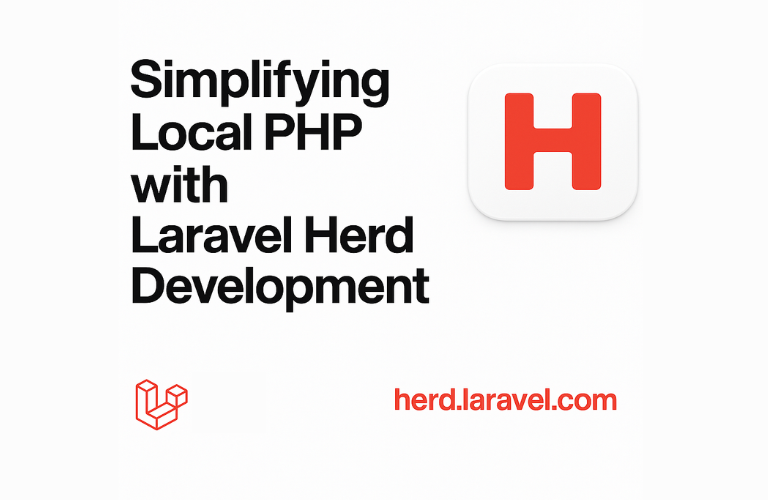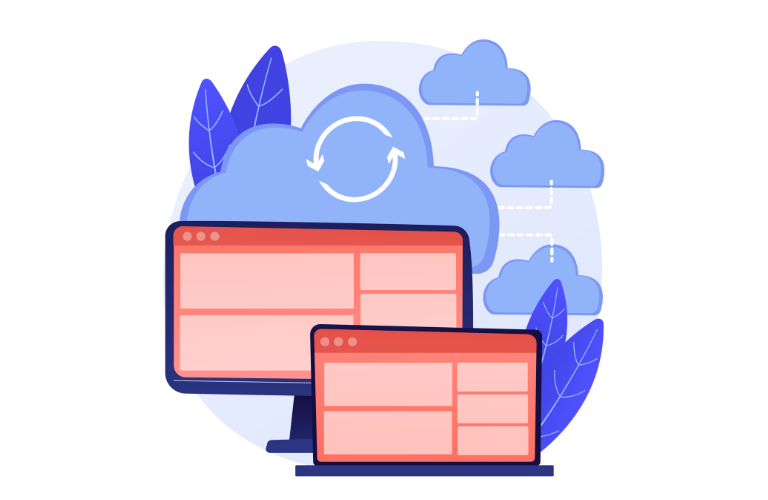Laravel Herd Development transforms how developers build PHP and Laravel applications locally. This lightweight, native environment eliminates the hassle of configuring complex stacks, letting you focus on coding. Whether you’re a beginner or a seasoned pro, Laravel Herd Development offers a fast, reliable setup for creating awesome web applications. In this guide, we’ll explore why it’s a game-changer, how to set it up, and practical tips to save time while solving common pain points like slow performance.
Table of Contents
Why Choose Laravel Herd Development?
Setting up a local PHP environment can feel like wrestling with endless configurations. Laravel Herd Development simplifies this by bundling everything you need—PHP, Nginx, Node.js—into one sleek package. Over 40,000 developers rely on it daily for its speed and ease.
- Blazing Fast: Laravel Herd Development skips heavy virtual machines, running natively on Windows and macOS.
- All-in-One: Includes PHP, Nginx, and Node.js, with Herd Pro adding databases and debugging tools.
- Seamless Routing: Automatically maps *.test domains to local sites, no DNS tweaks needed.
This setup tackles sluggish environments head-on, letting you code faster without constant tweaking.
Key Features of Laravel Herd Development
Laravel Herd Development isn’t just about speed—it’s packed with tools to streamline your workflow. Here’s what makes it stand out:
- Quick Installation: Set up in minutes with a two-click installer for Windows 10+ or macOS 10.14+.
- Flexible PHP Versions: Switch between PHP 7.4 to 8.4 instantly, pinning versions per project.
- Built-in Tools: Use Composer, Laravel installer, and Expose directly from your terminal.
- Herd Pro Extras: Manage MySQL, Redis, and testing tools for advanced projects.
These features save hours, letting you jump straight into coding instead of configuring servers.
How to Install Laravel Herd Development
Getting started with Laravel Herd Development is a breeze. Follow these steps to set up your environment:
Download the installer from the official Laravel Herd site.
Run it with admin privileges to enable the HerdHelper service, which maps *.test domains.
Verify the setup in your terminal with these commands:
herd --version
php --version
laravel --version
composer --version
node --versionIf you hit port conflicts (e.g., port 80 or 3306), stop other services like XAMPP before installing. In under 10 minutes, you’ll have a fully functional Laravel Herd Development environment.
Adding MySQL and phpMyAdmin for Free
The free version of Laravel Herd Development doesn’t include MySQL, but you can add it manually for database-driven projects. Here’s how:
- Windows: Download MySQL from mysql.com, set a root password, and enable it as a service.
- macOS: Use Homebrew (brew install mysql) and secure it with sudo mysql_secure_installation.
- phpMyAdmin: Extract its folder, run herd link phpmyadmin in the terminal, and access it at http://phpmyadmin.test. Secure it with herd secure.
This setup complements Laravel Herd Development, giving you a robust database management system without Herd Pro.
Simple Implementation: Creating a Laravel Project
Let’s walk through a basic Laravel project to see Laravel Herd Development in action. This example assumes you’ve installed Herd and MySQL.
Create a new project:
laravel new my-app
cd my-app
herd link my-appOpen http://my-app.test in your browser—you’ll see the Laravel welcome page instantly. Configure your .env file for MySQL:
DB_CONNECTION=mysql
DB_HOST=127.0.0.1
DB_PORT=3306
DB_DATABASE=my_app
DB_USERNAME=root
DB_PASSWORD=Run migrations:
php artisan migrateYour app is now live locally, thanks to Laravel Herd Development’s seamless routing and performance.
Real-World Use Case: E-Commerce Site
Imagine building a small e-commerce site. Laravel Herd Development shines here by simplifying setup and scaling. Start by creating a project as above. Use Herd’s built-in Nginx for fast page loads and pin PHP 8.2 for compatibility. Add Redis via Herd Pro for caching product pages, reducing database strain.
Test locally at shop.test, then push to Laravel Forge for deployment. This workflow, powered by Laravel Herd Development, cuts setup time by 50% compared to Docker, letting you focus on features like cart systems or payment gateways.
Time-Saving Shortcuts with Laravel Herd Development
Laravel Herd Development is packed with tricks to boost productivity. Here are some favorites:
- Expose Sites: Share your local site online with herd expose. Perfect for client demos.
- PHP Switching: Change versions with herd use php@8.1—no reinstalls needed.
- Node.js Management: Switch Node versions via herd node@16 for frontend tasks.
- Secure Domains: Run herd secure my-app to enable HTTPS locally.
These shortcuts eliminate manual tweaks, saving you hours weekly.
Optimizing Performance in Laravel Herd Development
Slow environments kill productivity. Laravel Herd Development is optimized, but you can make it even faster:
- Exclude Herd from Antivirus: Add %USERPROFILE%\.config\herd to Windows Defender’s exclusions to prevent scans slowing things down.
- Close Unused Apps: Free up RAM for smoother performance on older systems.
- Update Regularly: Herd notifies you of PHP and Node updates—stay current for speed boosts.
These tweaks ensure Laravel Herd Development runs at peak performance, even on modest hardware.
Laravel Herd Development vs. Alternatives
How does Laravel Herd Development stack up against other tools? Let’s compare:
- Docker: Powerful but complex. Herd is lighter and faster for Laravel projects.
- Homestead: Comprehensive but slow. Laravel Herd Development prioritizes speed and simplicity.
- Valet: Great for macOS, but Herd offers databases and broader framework support.
For quick Laravel Herd Development workflows, Herd wins with its native performance and ease.
Troubleshooting Common Issues
Even with Laravel Herd Development, hiccups can happen. Here’s how to fix them:
- PHP Version Conflicts: Use herd use php@8.2 to set the correct version per project.
- Database Errors: Double-check .env credentials and ensure MySQL is running.
- Slow Performance: Increase memory limits in Herd’s Settings > PHP > php.ini.
These solutions keep your Laravel Herd Development environment running smoothly.
Scaling with Laravel Herd Development and Forge
Once your app is ready, Laravel Herd Development pairs perfectly with Laravel Forge for deployment. Link your Herd project to a Git repository, push to Forge, and automate deployment with:
git pull origin main
composer install --no-dev
php artisan migrate --forceThis integration ensures your local Laravel Herd Development setup mirrors production, minimizing errors.
Conclusion
Laravel Herd Development is a must-have for PHP developers craving simplicity and speed. From two-click installs to instant *.test domains, it eliminates setup headaches and boosts productivity. Whether you’re building a blog or an e-commerce platform, this tool delivers a seamless experience. Download it today from getherd.io and transform your workflow with Laravel Herd Development.
FAQs
1. What is Laravel Herd Development?
It’s a fast, native environment for PHP and Laravel, bundling PHP, Nginx, and Node.js for quick setups.
2. How fast is Laravel Herd Development to install?
You can set it up in under 10 minutes with a simple installer.
3. Can I use Laravel Herd Development for non-Laravel projects?
Yes, it supports Symfony, WordPress, Magento, and more.
4. How do I fix slow performance in Laravel Herd Development?
Exclude Herd’s config folder from antivirus and close unused apps.
5. Does Laravel Herd Development include databases?
The free version doesn’t, but you can add MySQL manually or use Herd Pro.
6. How does Laravel Herd Development compare to Docker?
Herd is lighter and easier for Laravel, while Docker suits complex containerized setups.




